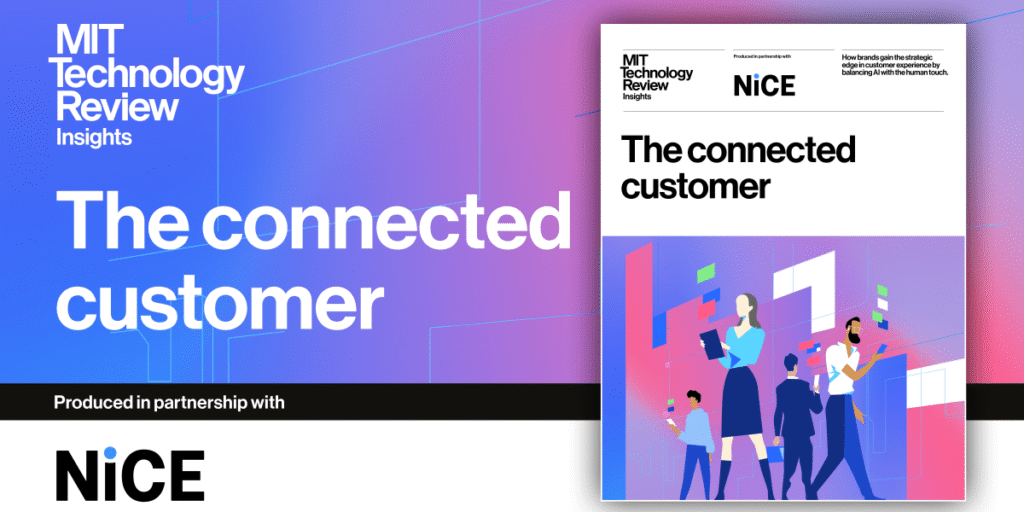As the marketplace becomes increasingly competitive, particularly among price-conscious consumers, brands are realizing that customer experience (CX) is no longer just an element of service; it is a decisive differentiator that can unlock sustained revenue growth and customer loyalty. However, many organizations struggle to meet the rising expectations for seamless, personalized service delivery. Common obstacles include outdated systems, fragmented data, and entrenched organizational silos. These impede agility and limit consistency in customer interactions, resulting in missed opportunities for meaningful engagement.
In this context, artificial intelligence (AI) emerges as a transformative force capable of addressing these challenges. Particularly, agentic AI—capable of reasoning and executing tasks across various workflows—offers a powerful opportunity to reshape service delivery models. With agentic AI, organizations can provide rapid, personalized support at scale while simultaneously enhancing workforce productivity and satisfaction. However, to realize the full potential of this technology, businesses need to move beyond deploying isolated tools. Instead, a unified platform that seamlessly connects people, data, and decisions across the service lifecycle is essential.
When it comes to AI and automation platforms, various options are available. Leading among these are tools like Make and Zapier for automation, and OpenAI and Anthropic for generative AI applications. Each platform presents its own strengths and weaknesses, impacting overall cost, return on investment (ROI), and scalability.
Make, formerly known as Integromat, is a powerful tool for process automation. Its strength lies in its visual interface, which allows users to create complex workflows without a technical background. Make supports a wide array of integrations and offers robust customization options. However, its complexity can be a double-edged sword; while it provides extensive capabilities, it may overwhelm users who prefer simplicity. Costs can vary depending on the number of operations, making it potentially more expensive for organizations requiring extensive automation.
Conversely, Zapier has gained popularity for its simplicity and user-friendly approach to automation. Its straightforward interface allows users to create “Zaps” that connect applications with ease. This is particularly advantageous for small to medium-sized businesses looking for low-barrier solutions to integrate their tech stack. However, Zapier’s limitations lie in its fewer customization options and some restrictions on multi-step workflows, potentially hindering advanced automation scenarios in larger, more complex organizations. In terms of costs, Zapier employs a tiered subscription model that is often more predictable and affordable for SMBs.
When comparing generative AI platforms like OpenAI and Anthropic, leaders must assess their strengths in terms of capabilities and ethical considerations. OpenAI boasts robust APIs that can be leveraged for a range of applications, from chatbots to content generation. Its models are widely regarded for their adaptability and large-scale data training. However, ensuring consistent quality and managing costs can be a concern, especially for organizations that depend heavily on high volumes of queries.
On the other hand, Anthropic positions itself as a more ethically oriented player in the AI space. Its focus on creating AI that is interpretable and safe offers an attractive proposition for organizations concerned about compliance and ethical implications. While Anthropic might not yet match OpenAI in terms of sheer capabilities or market penetration, its emphasis on safety and governance provides a strong value proposition that resonates with many SMBs looking to scale responsibly.
In evaluating the ROI of both automation and AI platforms, organizations must consider not only initial expenditure but also operational efficiencies, quality of customer interactions, and employee satisfaction. Companies that successfully integrate advanced automation and AI technologies often experience significant reductions in operational costs and improvements in service metrics, including customer retention and satisfaction scores. Moreover, solutions that allow for scalable deployment can facilitate growth without demanding proportional increases in resources—an essential consideration for SMB leaders aiming to expand their reach in competitive markets.
The takeaway for SMB leaders is clear: as they face challenges in delivering exceptional customer experiences, investing in a unified AI and automation platform holds the promise of transforming service delivery. The road to successful implementation requires careful selection among available tools, considering each one’s strengths, potential weaknesses, and overall alignment with organizational goals.
In conclusion, the market landscape is rapidly evolving, and organizations that prioritize a data-driven and customer-centric approach will stand out. By thoughtfully integrating the right tools, businesses can leverage AI and automation to not only meet but exceed customer expectations, cultivating loyalty and driving sustainable growth.
FlowMind AI Insight: To harness the full potential of AI and automation, organizations must prioritize the selection of unified platforms that facilitate seamless integration of data and workflows, ultimately fostering enhanced customer experiences. In a digital economy, the alignment between technology and customer-centric strategies will forge a path toward sustained competitive advantage.
Original article: Read here
2025-09-03 08:46:00

